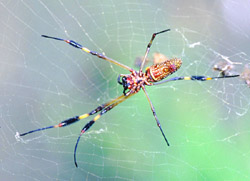
Most of the volunteer work was directed toward coffee pollinators in
general, and to bees in particular. Our job was to see what sorts of
bees there were in the Costa Rican countryside, and to see where they
lived; in coffee plantations, pasture, forest, or what.

I didn't take many photos there (I concentrated on siestas), but here on the right is a photo of the golden orb spider that was ubiquitous. This is the female, and from end of leg to end of leg is probably 5 or 6 centimeters long.
On the right is a photo of me with the sieve filled with the captured
insects. George suggested that we should both be awarded "The Order of
the Sieve".
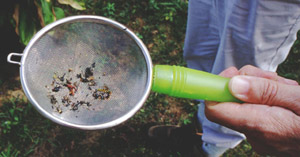
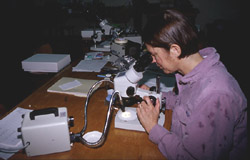
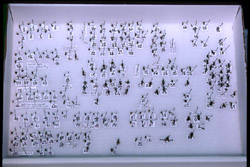
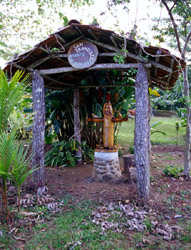
Of course we did get caught, but luckily we were caught by the owners
of the property exactly while they were trespassing on our friend's
land, so we figured it was a standoff, so we both went on our way,
each with a secret that would keep the other from telling. (But now
that my part is over, here's the story on the web, so I guess I
couldn't keep a secret, could I?
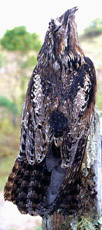
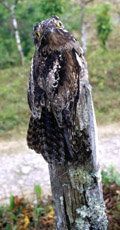
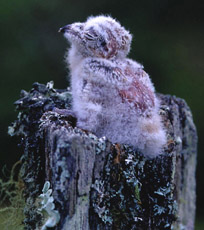
The guy was clearly interested, and asked lots of questions about the project which we tried to answer. Finally he asked, "Are you biologists?" When we said that we were, sort of, he then asked if we had any interest in birds, since he had just seen a type he had never seen even after working all his life outdoors in Costa Rica. He said he thought it was some sort of raptor.
Luckily, we had the bird book in the car, so I showed him the raptor pages, and he looked through all the pictures and said it wasn't one of them. But then he turned the page and was amazed to see all the parrots. He had never seen a book with bird pictures, and got really excited, turning the pages and pointing out all the stuff he'd seen. He had certainly paid a lot of attention, since he knew a lot of them, and when he finally got to the owl pages his his finger instantly shot out to point out the common potoo -- "That's it!"
Anyway, he took us to see the bird, and it was nesting on a fencepost about a meter and a half off the ground. It seemed asleep (not surprising -- it was the middle of the day) and all I had was a wide-angle lens on my camera (28mm, for all you photo buffs), but I was able to get within about 30 cm of the bird and get a good shot.
Then the guy insisted on trying to touch the bird which I didn't like, but how do you stop him? The bird opened his eyes, but stayed in place, so I got the open-eye photo as well.
The next day I returned with a couple of friends (and with a much more suitable lens) but the parent was gone, and only the baby was on the post. I took the baby picture but was worried that the adult had been frightened away by the guy.
I left the country early the next morning, but I did get an email from a friend who was there a bit longer who said the next day the adult was back.
I think the only reason the guy found the bird in
the first place is that his job was fence repair so
I'm sure he looks closely at every fence post,
whether he wants to or not. It was strange that
the potoo was so low -- the book says that they
usually nest a lot higher up.